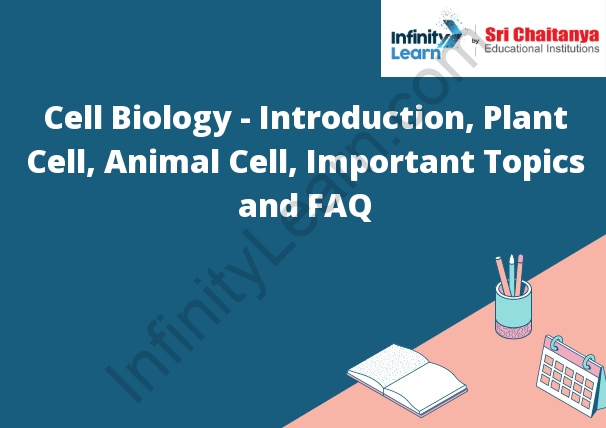Table of Contents
Introduction to Cell Biology:
In the world of biology, cells are the smallest unit of life. Cells are the basic building blocks of all living things. They come in many different shapes and sizes, and each type of cell has a specific job to do in the body.
There are three types of cells: prokaryotic cells, eukaryotic cells, and plant cells.
- Prokaryotic cells are the simplest type of cell. They are small and round, and they do not have a nucleus or any other specialized organelles.
- Eukaryotic cells are more complex than prokaryotic cells. They are larger and have a nucleus and other organelles.
- Plant cells are similar to eukaryotic cells, but they have cell walls and chloroplasts.
Cells are made up of molecules called proteins. Proteins are made up of smaller molecules called amino acids. There are 20 different amino acids, and each protein is made up of a specific sequence of amino acids. The sequence of amino acids in a protein determines its shape and how it behaves.
Cells are also surrounded by a cell membrane. The cell membrane is made up of a lipid bilayer and is responsible for protecting the cell and regulating what enters and leaves the cell.
Cells are important because they are the smallest unit of life. They are the basic building blocks of all living things, and they come in many different shapes and sizes. Each type of cell has a specific job to do in the body.
Introduction to Plant cell:
Plants are multicellular eukaryotic organisms that belong to the kingdom Plantae. They are distinguished from other eukaryotic organisms by their ability to produce lignin, a complex polymer that strengthens cell walls. Plants are the only organisms capable of photosynthesis, a process that uses sunlight to convert water and carbon dioxide into oxygen and glucose.
Plant cells are unique in that they possess cell walls and chloroplasts. The cell wall is a tough, non-living outer layer that surrounds the cell and provides structural support. The cell wall is composed of cellulose, a complex carbohydrate that is indigestible by humans. Chloroplasts are organelles that contain the green pigment chlorophyll. Chloroplasts are used in photosynthesis to convert sunlight into chemical energy.
Plant cells also possess other unique organelles, including the nucleus, cytoplasm, and mitochondria. The nucleus is the site of DNA replication and gene expression. The cytoplasm is the gel-like substance that surrounds the nucleus and contains the organelles. The mitochondria are the organelles that produce energy for the cell.
Introduction to Animal Cell:
Animal cells are the building blocks of tissues and organs in animals. They are distinguished from plant cells by the presence of a cell membrane and a cell wall. Animal cells also lack cell walls and chloroplasts. Animal cells are typically round or elongated, and they vary in size from microscopic to macroscopic.
The cell membrane is a thin, flexible layer of protein and lipid that surrounds the cell. It is the cell’s first line of defense against infection and other harm. The cell membrane also regulates the passage of substances in and out of the cell.
The cell wall is a tough, flexible layer of cellulose that surrounds the cell. It provides structure and support to the cell. The cell wall also helps to protect the cell from infection and other harm.
Cellulose is a type of carbohydrate that is found in the cell wall of plants and animals. It is made up of long chains of glucose molecules.
Chloroplasts are organelles found in the cells of plants. They are responsible for the process of photosynthesis, which is the conversion of sunlight into energy. Chloroplasts contain green pigments called chlorophyll, which give plants their green color.
Differences Between Plant Cell and Animal Cell:
Plant cells and animal cells are two very different types of cells. The main difference between plant cells and animal cells is that plant cells have a cell wall and animal cells do not. Plant cells also have chloroplasts, which are used for photosynthesis, while animal cells do not. Chloroplasts are not found in all plant cells, but those that do not have them still have other differences, such as the presence of a cell membrane and a cytoplasm.

Plant cells and animal cells are two types of cells. They are both eukaryotic cells, meaning that they have a membrane-bound nucleus and other organelles. However, plant cells and animal cells differ in a number of ways.
One major difference between plant cells and animal cells is that plant cells have cell walls, while animal cells do not. Plant cell walls are composed of cellulose and other substances, and they play a role in cell structure and function. For example, the cell wall helps to protect the cell and maintain its shape.
Another difference between plant cells and animal cells is that plant cells have chloroplasts, while animal cells do not. Chloroplasts are organelles that contain chlorophyll and allow plants to photosynthesis.
Lastly, plant cells and animal cells differ in the way that they produce energy. Plant cells produce energy through photosynthesis, while animal cells produce energy through aerobic respiration.
What is Cell in Unit of Life?
Cell is the unit of life because cells are the smallest living things and all living things are made up of cells. Cells are the basic units of structure and function in all organisms.
The cell is the unit of life because it is the smallest unit of life that can self-replicate. Cells are composed of molecules that are held together by chemical bonds. These molecules include proteins, carbohydrates, and DNA. The cell is a self-replicating unit because it contains the genetic information necessary to create a new cell. Cells are also able to produce energy and carry out metabolic processes.
What is Cell Theory?
The cell theory is a scientific theory that states that all living things are composed of cells and that all cells come from preexisting cells. The theory was first proposed in 1838 by Matthias Jakob Schleiden and Theodor Schwann and has been extensively revised over the years.
Cell theory is the scientific theory that states that all living things are composed of cells and that cells are the basic unit of life. The theory was first proposed by Matthias Schleiden and Theodor Schwann in 1838 and has been widely accepted since then.
There are three main tenets of cell theory:
- 1. Cells are the basic unit of life.
2. All living things are composed of cells.
3. Cells arise from pre-existing cells.
Cell theory is the fundamental theory in biology that states that all living things are composed of cells, and that cells are the basic unit of life. The theory was first proposed by Matthias Schleiden and Theodor Schwann in 1838, and further developed by Robert Hooke in 1665.
The theory is based on the observation that all living things are composed of small, discrete units that can be seen with a microscope. Hooke was the first to describe these units as cells, and he observed that they were the basic building blocks of all living things.
Cell theory has been confirmed by countless scientific experiments over the years, and it is now considered to be the foundation of modern biology.
Important Cell Biology Topics:
Cell Biology is the study of cells, their structure, function, and behavior. The most important topics in cell biology include the following:
Cell Structure: Cells are small, but complex structures. They are composed of organelles, which are specialized structures that perform specific functions. The cell membrane is the outer layer of the cell and is responsible for protecting the cell and regulating what enters and leaves the cell. The cytoplasm is the jelly-like substance inside the cell membrane and contains the organelles.
Cell Function: Cells perform many essential functions, including the production of energy, the transport of materials, and the communication with other cells.
Cell Behavior: Cells can communicate with each other and respond to their environment. They can also divide to form new cells.
FAQ:
1. What is a cell?
A cell is the smallest unit of life. It is the basic structure of all living things.
2. What is the cell membrane?
The cell membrane is a thin layer of tissue that surrounds the cell. It controls what enters and leaves the cell.
3. What is the cell wall?
The cell wall is a tough layer of tissue that surrounds the cell. It provides protection for the cell.
4. What is the cytoplasm?
The cytoplasm is the substance that fills the cell. It contains the cell’s organelles.
5. What are organelles?
Organelles are the structures that make up the cells. They include the nucleus, the mitochondria, and the ribosomes.
6. What is the nucleus?
The nucleus is the organelle that contains the cell’s DNA. It directs the activities of the cell.
7. What is DNA?
DNA is the molecule that contains the genetic information of an organism. It directs the growth and development of the organism.
8. What is the mitochondria?
The mitochondria are the organelles that produce energy for the cell. They are responsible for the cell’s metabolism.
9. What is the ribosome?
The ribosome is the organelle that manufactures proteins. It is responsible for the cell’s growth and development.









